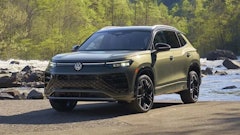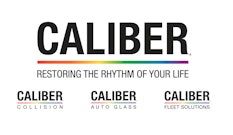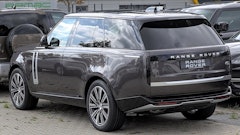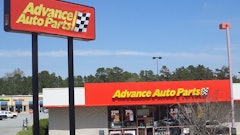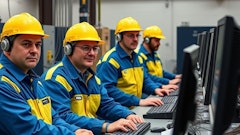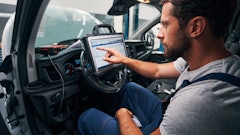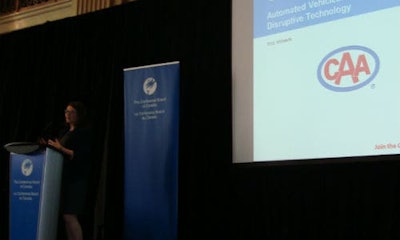
By Jeff Sanford
Toronto, Ontario — April 20, 2016 — Canada’s first conference dedicated to automated vehicles took place in downtown Toronto this week. Please see “Autonomous vehicle conference: ‘no such thing as a crashproof car’” for the start of coverage of this landmark event. A sponsor of the event, the Canadian Automobile Association (CAA), has published a report summing up the findings of a recent survey.
According to data collected by the CAA, Canadians do not yet “trust” autonomous vehicles. Nearly two-thirds (63 percent) of Canadians say they would not trust a vehicle to drive itself while they are in it. Canadians also stated concerns about vehicle hacking and theft of data generated by the vehicle. Canadians surveyed also said they believe there are benefits to driverless cars in the future, such as improved accessibility for people with mobility issues and fewer road safety incidents due to reduced human error. More than half (57 percent) of Canadians say they think this technology will advance to a point where they would fully trust a driverless car in the next 10 years.
As day two of the conference got underway, Paul Godsmark, Chief Technology Officer at the Canadian Automated Vehicles Center of Excellence (CAVCOE), suggested in his comments that some Canadians are going to be surprised how fast AVs emerge.
Godsmark is an avowed AV supporter. He thinks a new economy is already emerging. He encouraged Canadians to take note of the shifting trends as he outlined what might be called the “hard take” on AVs: the arrival of these cars will be a radically disruptive event. He believe this event is already underway and wll happen faster than most think.
Godsmark had some fascinating ideas and predictions. According to Godsmark there is a tsunami hitting our modern car culture, and he draws comparisons between now and the start of the 20th century when automobiles displaced horses.
“It’s happening fast. In just a decade, by 1913, the horses were gone from New York City and had been replaced by cars. A similar thing will happen with AVs,” says Godsmark. “We’re in the middle of a hockey-stick like growth curve. This is happening rapidly.”
The new Tesla could have an autonomous mode downloaded to it soon, so in theory there could be hundreds of thousands of AVs on the road within just a couple of years. The arrival of completely autonomous AVs, so-called Level Four and Five automation, will kickstart a whole new economy.
“There is going to be a $10 trillion mobility market. This will affect two percent of the total market. We’re talking about four percentage points of GDP here,” says Godsmark.
Godsmark says AVs will be a unique, new consumer product in that they will be able to make money for the owner. Godsmark forsees a time when people will be able to rent out their AV for the 95 percent of the time it’s not being used. “Cars are the world’s most under-used asset. Currently they sit parked for the vast majority of the time,” he says.
In the years ahead AVs will be able to be rented out to others as taxis. The AVs will drop someone at work, then go off to carry other people around.
The demand for public transit will be decimated, according to Godsmark. A belief among hardcore AV supporters like Godsmark is that they believe “the auto industry is the most disruptable business on earth.” He expects that as a result of AVs one-third fewer people could use transit. “AVs will offer point-to-point service, rather than fixed routes,” he says. That will be compelling for the average person. AVs will take over bus routes with low rates of use. “This is the first consumer product to exist like this,” says Godsmark. “This is going to be transformative.”
Godsmark expects each AV to replace anywhere from two to 13 private vehicles. Families will get used to automated taxis and a seeming personal chauffeur for the family always on call. AVs won’t just transport people, but goods and services. Think about “sidewalk-friendly” AVs and what that could change in the way of food delivery alone.
The AV fleets will be run by commercial entities, which could eventually begin to do road work as well, according to another conference goer. The current structure of municipal finance shifts in deeply fundamental ways. As fuel taxes drop because the cars are electric, governments could find themselves in trouble.
There is a new and potentially dangerous world dawning. A constellation of tech companies, OEMs, small tech start-ups, transit companies, taxi companies, ride sharing apps are coming together and beginning to form into so-called mobility providers. One attendee talked about a catalogue of mobility services being bought by the average person. It could include a certain number of hours of bike sharing, so many miles of transit access and then so many hours of share in a car.
“I think there could be ten to twelve of these big mobility providers in the future,” says another panel member. GM recently opened up a new “mobility” centre and has bought up tech-based ride share companies. Ford has already announced it is no longer a car company but a mobility provider. AVs are, according to the now remarkable levels of hype, the next new big thing.
Godsmark went on to suggest that municipal and provincial governments do audits of major transportation projects. Godsmark highlights a quote from the mayor of Los Angeles: “How do you spend billions on fixed rail when we might not own cars in this city in a decade, decade and a half.” Wrapping up his presentation, he was emphatic, “This technology is coming like a freight train,” says Godsmark.
Watch for more coverage coming soon from Collision Repair magazine, including some of the companies emerging in the new mobility space and the winners—and losers—in terms of jobs.









